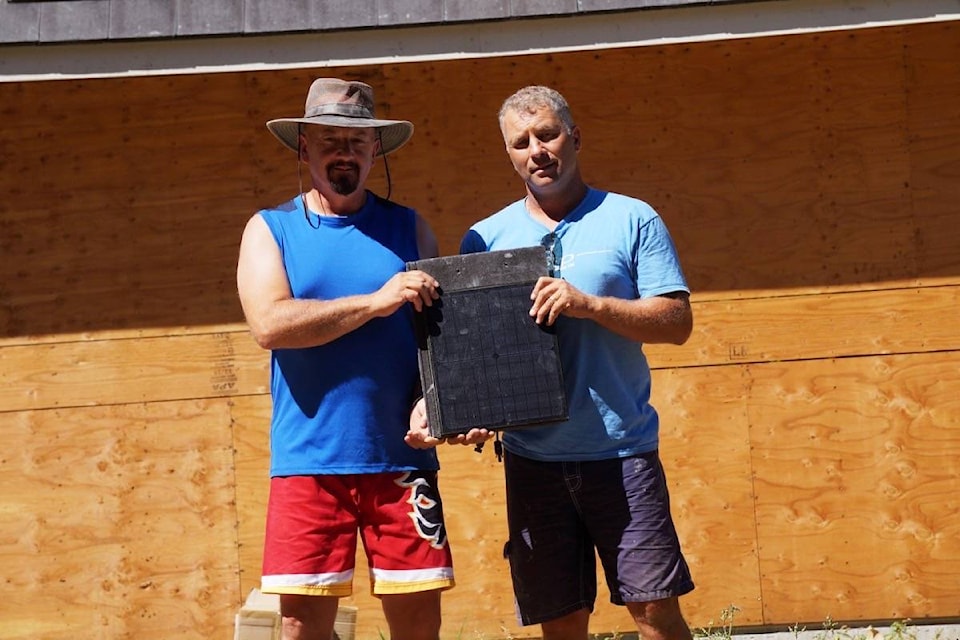A design engineer from the United Kingdom is installing his solar energy tiles for the first time on Vancouver Island on a residential roof in Qualicum Beach.
Paul Cropper, co-founder of the British firm Solarmass Energy, said the solar panel tiles offer an alternative to the large glass and metal solar panels that connect to roofs of houses and buildings. He said the design is brand new to Vancouver Island.
“This system is designed to go with the concrete interlocking tiles, so you use as many of the solar (panels) as you want and finish it off with a normal roof tile. The installation of this is actually designed to be done by a roofer,” Cropper said.
“We can optimize any shape of roof, it doesn’t have to be a big rectangle. This system works really, really good in low light, and on dark days you get more power out of our system.”
Each solar panel is attached to a concrete tile that is installed on a roof.
Craig Gooding, whose Qualicum Beach home is being installed with the solar tiles, was introduced to Solarmass Energy through his brother-in-law who is among a group of Canadian investors who have bought parts of Solarmass Energy.
Gooding, owner of the construction company VIP Homes, said he wanted to use solar energy to power his home because of the rising BC Hydro costs.
“BC Hydro is just killing us, (prices) have gone up and up and up. It’s gone up 10 times since I moved to Qualicum,” Gooding said.
He said BC Hydro lets people using solar energy use net metering.
Net metering is a system where solar panels, or other renewable energy generators, are connected to a public-utility power grid and surplus power is transferred onto the grid, allowing customers to offset the cost of power drawn from the utility.
“I’ll feed back (to the grid) during the day, and at night I’ll draw from that system so it should even itself out,” Gooding said. “(BC Hydro) will let you do net metering as long as you don’t oversize your system.”
All in, Gooding said the solar panel tiles for his roof cost $40,000 to install.
“I’ll probably pull about $6,000 a year from hydro, that’s what I’ll save,” Gooding said.
“(The installation) will take about seven years to pay off. Then (the panels) have got a 36-year-warranty, so then I’ve got another 29 years of solar power for free. It’s a great thing.”
Gooding said the tiles are quite quick and easy to install.
“We did this (26 solar panels) with four of us in a day, where as it would have taken three or four days to mount 26 (large glass) solar panels,” he said.
Cropper said the design is becoming more popular worldwide.
“It’s totally green energy, there’s no emissions,” Cropper said.
“Whatever you supply into the grid during the day, you’re meter is going backwards at night and you’re reversing it. Depending on the size of the system, you can get to the end of the year and you’re hydro bill can be zero, I mean who wouldn’t want that.”
Send story tips to karly.blats@pqbnews.com
